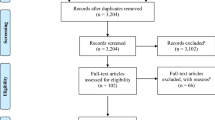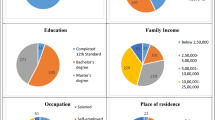Abstract
In studies involving genuine transactions of potentially high value we show that willingness-to-pay can be increased when customers are instructed to use a credit card rather than cash. The effect may be large (up to 100%) and it appears unlikely that it arises due solely to liquidity constraints. In addition to demonstrating the effect, we provide a methodology for detecting it, and our findings suggest a source of variance to test alternative explanations.
Similar content being viewed by others
References
Ausubel, Lawrence M. (1991). “The Failure of Competition in the Credit Card Market,” American Economic Review 81, 50–81.
Becker, Gary M., Morris H. DeGroot, and Marschak, Jacob. (1964). “Measuring Utility by a Single-response Sequential Method,” Behavioral Science 9, 226–232.
Feinberg, Richard A. (1986). “Credit Cards as Spending Facilitating Stimuli: A Conditioning Interpretation,” Journal of Consumer Research 12, 384–356.
Hirschman, Elizabeth C. (1979). “Differences in Consumer Purchase Behavior by Credit Card Payment System,” Journal of Consumer Research 6, 58–66.
Soman, Dilip. (1999). Effects of Payment Mechanism on Spending Behavior: The Illusion of Liquidity. Working Paper, Hong Kong University of Science and Technology, Hong Kong.
Vickrey, William. (1961). “Counterspeculation, Auctions, and Competitive Sealed Tenders,” Journal of Finance 16, 8–37.
Author information
Authors and Affiliations
Rights and permissions
About this article
Cite this article
Prelec, D., Simester, D. Always Leave Home Without It: A Further Investigation of the Credit-Card Effect on Willingness to Pay. Marketing Letters 12, 5–12 (2001). https://doi.org/10.1023/A:1008196717017
Issue Date:
DOI: https://doi.org/10.1023/A:1008196717017




